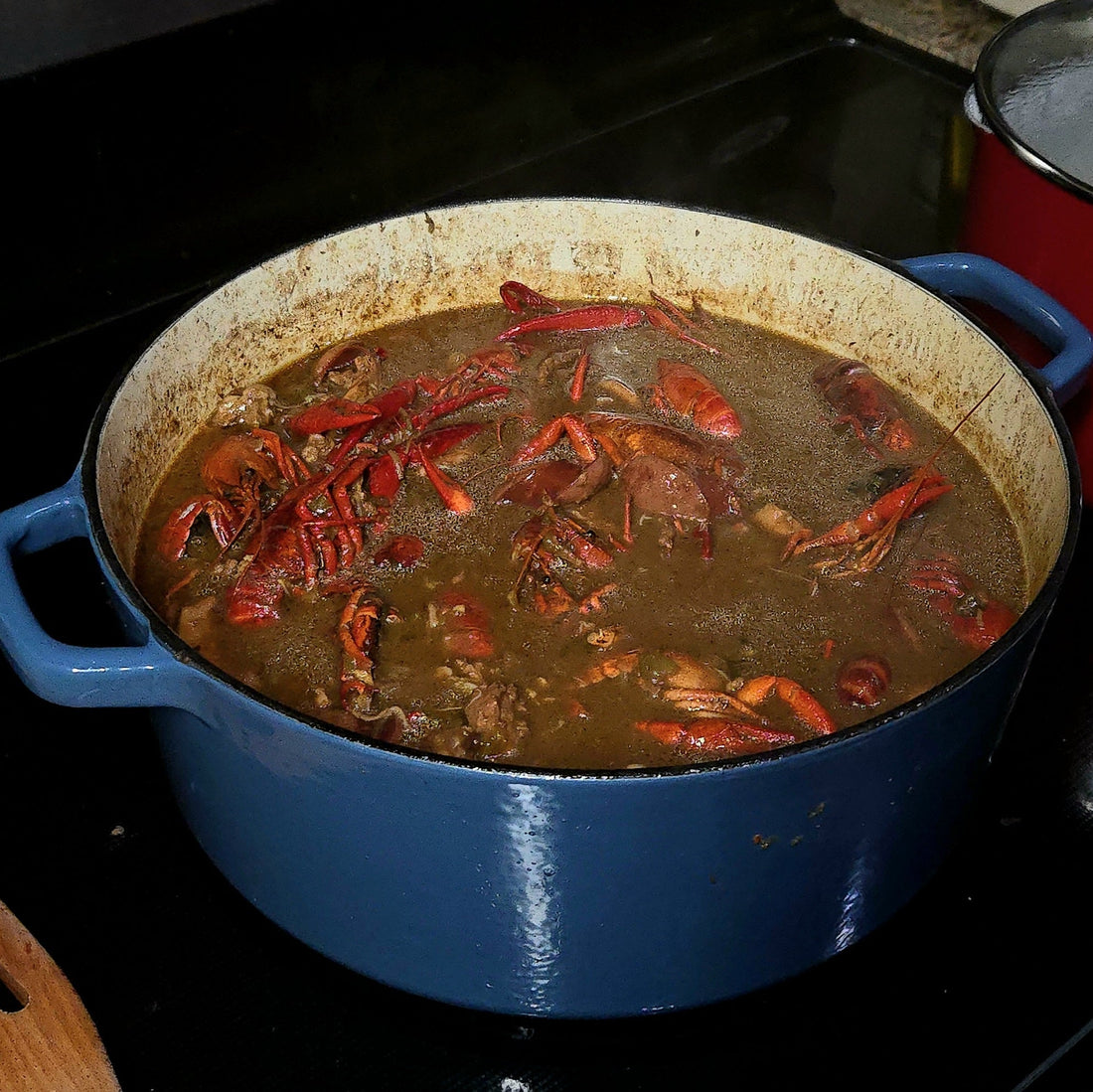
Chicken, Sausage and Crawfish Gumbo
Achunchigan LattoreShare
Gumbo is a hearty and flavorful stew that is a staple of Louisiana Creole and Cajun cuisine. It’s a dish that takes time, patience, and love, but the result is a truly satisfying and delicious meal. This recipe takes the traditional gumbo and gives it a unique twist with a different combination of meats and seasonings.
Ingredients
-
Roux:
-
1/2 cup all-purpose flour
-
1/2 cup vegetable oil
The "Holy Trinity" and aromatics:
-
1 large onion, diced
-
1 green bell pepper, diced
-
3 celery stalks, diced
-
4 cloves garlic, minced
The Meats:
-
1 lb boneless, skinless chicken thighs, cut into 1-inch pieces
-
1 lb Italian sausage, casings removed
-
1 lb smoked andouille sausage, sliced into 1/2-inch rounds
-
1 lb crawfish tails, peeled and cooked
The Liquid:
8 cups chicken stock, or more as needed
The Seasoning:
-
Tony Chachere's Creole Seasoning (adjust to taste)
-
Blaxican Fajita Seasoning (adjust to taste)
Garnish:
Fresh parsley, chopped
Cooked white rice for serving

Instructions
-
Make the Roux: This is the most important part of the gumbo, and it requires your full attention and patience. In a heavy-bottomed pot or Dutch oven, heat the vegetable oil or beef tallow over medium heat. Whisk in the flour until smooth. Continue to cook, stirring constantly, for 20-30 minutes. Do not rush this process! The roux will go from a pale yellow to a peanut butter color, then to a rich, dark chocolate brown. The darker the roux, the more flavor and color it will give your gumbo. The final color should be a rich, dark brown, which will give your gumbo a deep, nutty flavor and a beautiful dark hue. If you rush it and burn the roux, you have to start over because the gumbo is the canvas, and the rest of the ingredients are the paint on this beautiful piece of artistry.

Add the sliced frozen okras here, and stir in until softened. This will happen quickly, but frozen okras sort of cool down the cooking process a bit, and help the roux not burn. If you have fresh okra, just be careful.

-
Sauté the "Holy Trinity": Once the roux has reached the desired color, add the onions, bell peppers, and celery. Stir continuously and cook until the vegetables are soft, about 5-7 minutes. Add the minced garlic and cook for another minute until fragrant.

At this point, add 4 quarts or more of your stock. I have videos and written recipes of how to make your own stock at home. This gives the best flavor. This is where you add the Italian sausage and break it up; this is to help with the body of the stew. Cover the pot and let it come to a slow boil, then reduce the heat to low and simmer for two hours.

-
Brown the Meats: In a separate skillet, brown the sliced andouille sausage and the cubed chicken separately. Add the browned sausage and chicken to the gumbo. Deglaze the skillet with a quarter cup of stock and add the liquid (fond) to the gumbo.
-
Flavor the dish: Sprinkle the Tony Chachere's Creole Seasoning and Blaxican Fajita Seasoning over the meat and vegetables. Stir to combine. At this point, add 3-5 crawfish into the gumbo and continue to simmer for two hours. The crawfish added here will give the gumbo maximum flavor, but save the remaining crawfish till the end.
Simmer and Develop Flavor: Let the gumbo simmer, covered, for at least 2 hours. The longer it simmers, the more the flavors will meld together and deepen. Skim off any excess fat that rises to the surface.
-
Add Crawfish: About 10 minutes before serving, stir in the cooked crawfish (whole or tails). Cook just until they are heated through. Do not overcook them, or they will become tough. After 10 minutes, remove the pot from the heat and allow it to rest for at least 10 minutes. This allows the crawfish to soak up some of the juices.
-
Serve: Ladle the gumbo over a scoop of cooked white rice. Garnish with chopped green parsley. Serve hot and enjoy!

To File or Not to File?
Gumbo file (pronounced "fee-lay") is a powder made from dried and ground sassafras leaves. It has two main purposes in gumbo: to thicken it and to add a unique, earthy flavor. I personally don’t use it since I develop the roux and earthy, nutty flavor naturally. The thickness also comes from the time of cooking, which allows the ground sausage and the chicken to break down and create a super-rich, flavorful gumbo sauce.
Reasons to use file: If you want a thicker gumbo and enjoy the distinct, root beer-like flavor that file provides, it is a great addition.
Reasons not to use file: If you prefer a thinner gumbo or do not want the specific flavor that file imparts, you can omit it. In addition, the file should never be cooked with the gumbo, as it will become stringy and slimy. It should always be stirred into individual bowls just before serving.

Whether you use a file is a matter of personal preference and tradition. This recipe is delicious with or without it, so feel free to experiment and find what you like best.
I hope you'll try this delicious gumbo recipe! It's the perfect dish to warm your soul and impress your loved ones. Enjoy!
